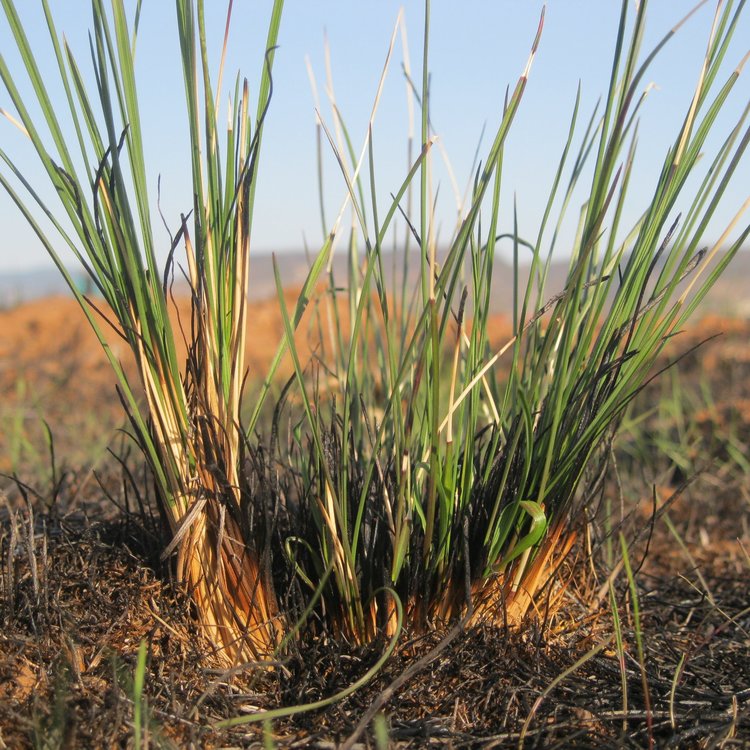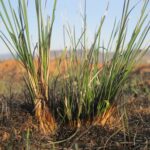Winter is when native bunchgrasses shine. After other understory plants lose their leaves and flowers, perennial bunchgrasses such as Lemmon’s needlegrass flare out from the earth while extending their root systems deep underground.
Lemmon’s needlegrass (Achnatherum lemmonii), bears long, needle-like awns extending from either side of the seed, a feature which can make this plant unpalatable to livestock. However, birds and small mammals have no problem plucking the nutritious seed from between the awns. Deer and elk also browse on Lemmon’s needlegrass, while moths and butterflies nest at the base, making this a key species for wildlife.
This attractive bunchgrass is popular as both a landscaping plant and in habitat restoration. It needs little maintenance once established and stays green late into the summer. It is an essential component of oak savannah and prairie habitat and, as shown in the photo, resprouts readily after a burn. There is even a local subspecies, Achnatherum lemmonii subsp. pubescens, that is adapted to serpentine soils.
Photo credit: Teresa Fernandez


